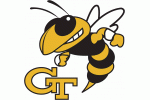Third time around.
| North Carolina | Syracuse | |
| Conference | ACC | ACC |
| Record | 32-6 | 23-13 |
| Conference Record | 14-4 | 9-9 |
| NCAA Record | 4-0 | 4-0 |
| KenPom Rank | #2 | #22 |
| Points per game | 83.0 | 70.1 |
| Adj. Off. Efficiency(Rank) | 123.1(1st) | 111.1(50th) |
| Ad. Def. Efficiency(Rank) | 95.3(22nd) | 94.3(16th) |
| Tempo(Rank) | 71.4(62nd) | 65.7(319th) |
| Offensive eFG% | 52.5% | 50.1% |
| Defensive eFG% | 47.7% | 47.0% |
| Field Goal % | 48.2% | 42.6% |
| 2P FG% | 54.1% | 47.2% |
| 3P FG% | 32.1% | 36.1% |
| FT% | 74.7% | 69.4% |
| Offensive Reb Rate | 40.3% | 33.4% |
| Defensive Reb Rate | 70.0% | 65.1% |
| TO Rate | 15.3% | 18.2% |
| FT Rate | 33.0% | 35.9% |
| 3PA% | 26.8% | 42.2% |
 When these two teams met on February 29th, UNC was ranked 5th in KenPom and Syracuse 42nd. UNC was 39th in defensive efficiency with the Orange just behind in 40th. Since then both teams have seen some significant improvements on the defensive end with the Orange rocketing to 16th and UNC as high as 10th before last weekend which dropped the Tar Heels back to 22nd. Much of that is owed to playing better teams in the postseason with good performances boosting the numbers.
When these two teams met on February 29th, UNC was ranked 5th in KenPom and Syracuse 42nd. UNC was 39th in defensive efficiency with the Orange just behind in 40th. Since then both teams have seen some significant improvements on the defensive end with the Orange rocketing to 16th and UNC as high as 10th before last weekend which dropped the Tar Heels back to 22nd. Much of that is owed to playing better teams in the postseason with good performances boosting the numbers.
In that respect it is probably best to look at what these two teams have done just in the NCAA Tournament in terms of offensive and defensive efficiency.
| UNC Offense | Syracuse Defense | |
| 1st Round | 119.1 | 80.3 |
| 2nd Round | 120.7 | 82.6 |
| Sweet 16 | 142.2 | 96.0 |
| Elite 8 | 154.3 | 96.4 |
| UNC Defense | Syracuse Offense | |
| 1st Round | 96.1 | 110.0 |
| 2nd Round | 93.7 | 123.7 |
| Sweet 16 | 121.1 | 100.8 |
| Elite 8 | 129.8 | 105.8 |
The gaudy numbers are in the first chart. UNC has been a ridiculous team offensively since the NCAA Tournament started and especially in the past two games. While no one should be shocked the Tar Heels laid waste to Notre Dame's defense, Indiana actually had some decent defensive numbers. Of course the win over Notre Dame also occurred with just 57 possessions making those 88 points quite remarkable.
As good as UNC has been offensively, Syracuse has been as good on the defensive side. Dayton and Middle Tennessee didn't sport great offenses but Gonzaga and Virginia were both high efficient teams. The Orange's ability to shut both of those teams down is noteworthy and a signal that as good as UNC has been, Syracuse might have the ability to slow the Tar Heels down.
In that respect let's take a look at what the first two games between these teams looked like.
| Game #1 | Score | Tempo | OE | eFG% | TO% | OR% | FTR |
| UNC | 84 | 69 | 122.5 | 54.9 | 13.1 | 32.3 | 32.8 |
| Syracuse | 73 | 106.4 | 50.0 | 18.9 | 37.8 | 19.1 |
| Game #2 | Score | Tempo | OE | eFG% | TO% | OR% | FTR |
| UNC | 75 | 70 | 106.4 | 45.6 | 18.4 | 46.3 | 27.9 |
| Syracuse | 70 | 99.3 | 45.5 | 21.3 | 36.4 | 42.0 |
Both games tell different stories. UNC's 122.5 was the worst defensive efficiency for Syracuse for the season and one of only two teams to crack 120 versus the Orange. In the second game, UNC's offensive efficiency dropped to 106.4 thanks in large part to Orange adjustments to keep the Tar Heels from using the high-low game that was so effective at the Carrier Dome. Instead UNC settled for threes and largely moved away from what it did best.
On the other end, UNC's defense has proven consistent against the Orange holding Syracuse to offensive efficiency ratings of 106.4 in the first game and 99.3 in Chapel Hill. Syracuse shot under 30% from three in both games and was turnover prone with TO% of 18.6 and 21.4 respectively.
This game likely comes down to whether UNC can hit the efficiency marks for the first game while maintaining consistency on defense. The Orange have been up and down offensively in the NCAA Tournament so providing UNC can do what it did during the first two games on the defensive end, finding enough offense to grab the win shouldn't be an issue.



















